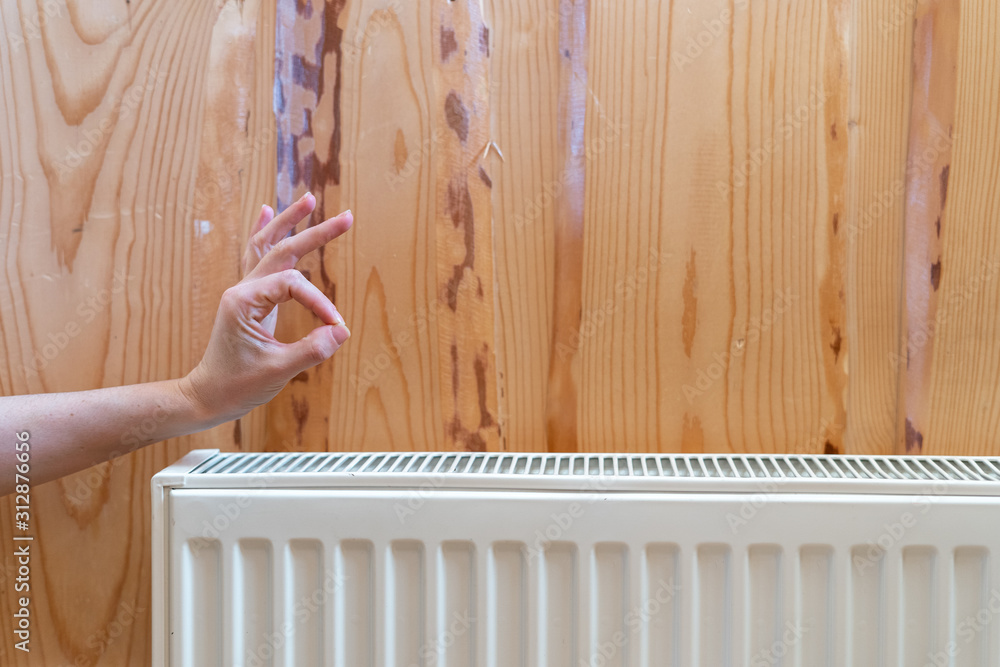What is the ideal temperature in your building?

When designing a workspace, achieving an optimal temperature requires considering both heating and cooling needs. HVAC systems (short for Heating, Ventilating, and Air Conditioning) are specifically engineered to maintain ideal temperatures across various types of buildings. These systems enhance the efficiency and “intelligence” of both cooling and heating units, such as boilers and air conditioners.
To achieve an ideal indoor temperature, several factors must be taken into account:
- Type of building: Office, warehouse, laboratory, food preparation, etc.
- Age of the building: How well the structure retains heat.
- Activities within the building: Physical workload or sedentary tasks.
- External weather conditions: Seasonal variations and outdoor temperature.
- Smart control systems: Advanced monitoring and adjustments for heating and cooling.
Why Is Maintaining an Optimal Workplace Temperature Important?
Providing a comfortable workplace temperature is not just a fundamental health and safety responsibility for employers but also contributes significantly to productivity and the well-being of employees. Excessively warm or humid conditions can lead to dizziness, tension, and fatigue, negatively impacting employee focus. Conversely, extreme temperatures can result in productivity loss, mistakes, and critical safety concerns.
Uncomfortable environments—whether too hot or too cold—affect both the body and the mind. Therefore, maintaining an ideal indoor temperature should always be a priority.
How Do You Determine the Optimal Temperature?
The decision on the right temperature largely depends on the building type. For instance:
- Warehouses: Keeping a large, open space warm is challenging, especially with frequent external door openings.
- Offices, retail spaces, and healthcare centers: These are generally easier to heat.
- Specialized environments: Areas involving strenuous physical labor or unique operations, like food preparation or industrial tasks, require tailored temperature and ventilation systems.
While personal preferences can influence the choice of optimal temperature, guidelines exist to aid decision-making.
What Are the HSE Guidelines on Optimal Workplace Temperature?
According to the Health and Safety Executive (HSE), workplaces with physically demanding tasks should maintain a minimum temperature of 13°C (55°F), while less strenuous environments should be at least 16°C (60°F). For office settings, a more stable and comfortable range of 21°C to 23°C (70°F to 73°F) is generally recommended.
Although there is no strict maximum or minimum temperature for workplaces, factors such as radiant temperature, humidity, and airflow should be considered. These elements influence the design of appropriate HVAC systems, especially in environments with high humidity levels, such as factories or food preparation areas.
Employers must demonstrate a “reasonable” approach to maintaining workplace temperatures by considering individual circumstances and conducting risk assessments. While no “magic number” exists for the perfect temperature, employers are obligated to ensure employee safety and comfort.
Read on: LoRa: An Effective Solution for Reducing OPEX in Smart Buildings
What Is the Best Temperature for Commercial Spaces?

The best temperature for commercial buildings is one that satisfies the majority. The Occupational Safety and Health Administration (OSHA) recommends maintaining indoor temperatures between 60°F and 76°F (15°C to 24°C) for most workplaces.
However, special considerations must be made for:
- Employees near heat-producing equipment.
- Workers exposed to external drafts or close to entry points.
- Individuals in areas naturally colder or warmer than the average building environment.
How Does Temperature Impact Employees?
Balancing indoor temperatures is crucial due to its direct effects on employees and customers. Common challenges include:
- Reduced Performance: Uncomfortable environments hinder productivity. Cold temperatures can cause muscle stiffness, making movement more difficult, while excessive heat reduces energy levels and motivation.
- Lower Morale: Employees in overly cold areas may feel withdrawn and less social. Conversely, excessively warm environments can lead to irritability and frustration.
- Requests for Adjustments: Unaddressed discomfort can escalate to resentment and further negative outcomes. Employees should be encouraged to report temperature issues.
Tips for Managing Workplace Temperatures:
- Wear Appropriate Clothing: In cooler spaces, employees can use layers, such as jackets, scarves, or fingerless gloves.
- Take Breaks in Comfortable Areas: Offer rest areas with adjusted temperatures to provide relief.
- Consume Suitable Beverages: Warm drinks like coffee or cool refreshments can help employees regulate their body temperature.
Conclusion
Properly maintained HVAC systems are key to balancing indoor temperatures against outdoor conditions, regardless of the type of workplace. Facility management services specializing in HVAC maintenance can evaluate workplace needs and design maintenance systems to meet optimal temperature ranges. Prioritizing a comfortable environment enhances employee satisfaction, productivity, and overall workplace safety, making temperature control an essential aspect of workplace management.




